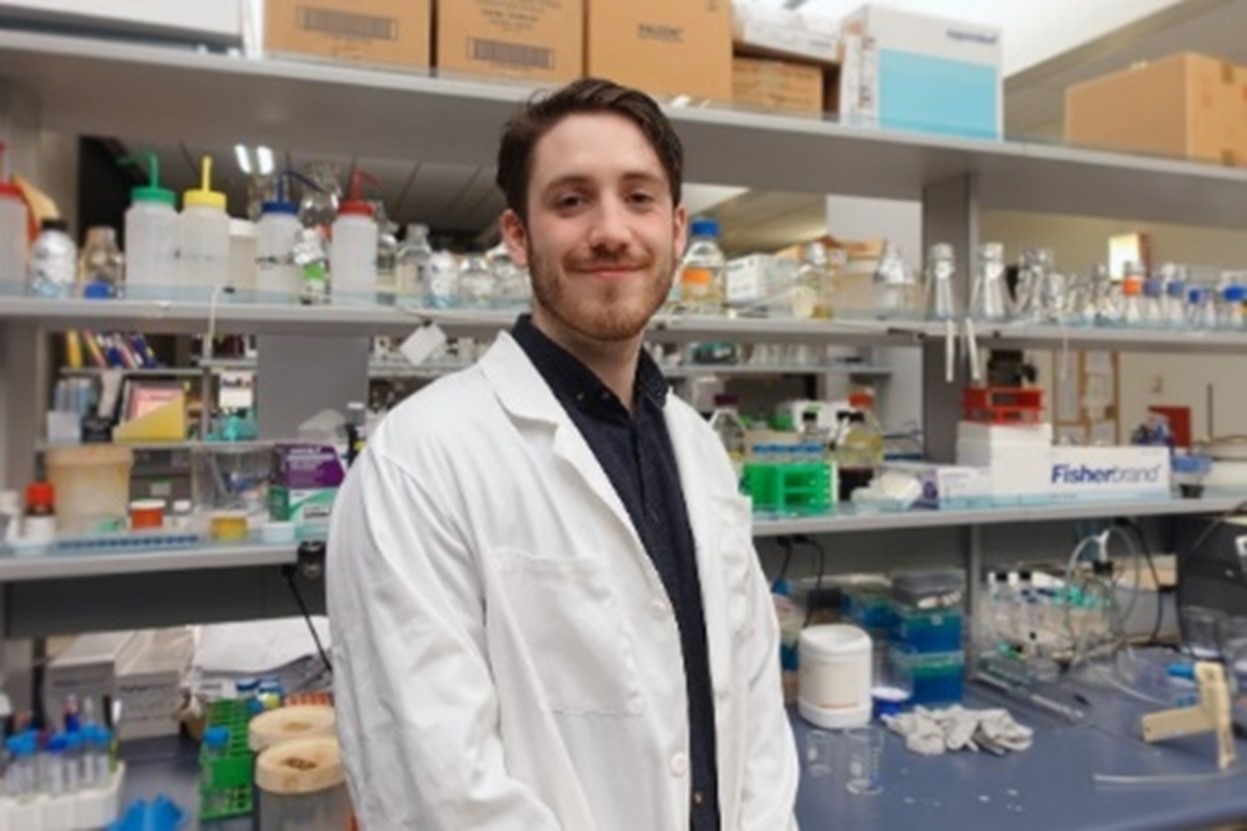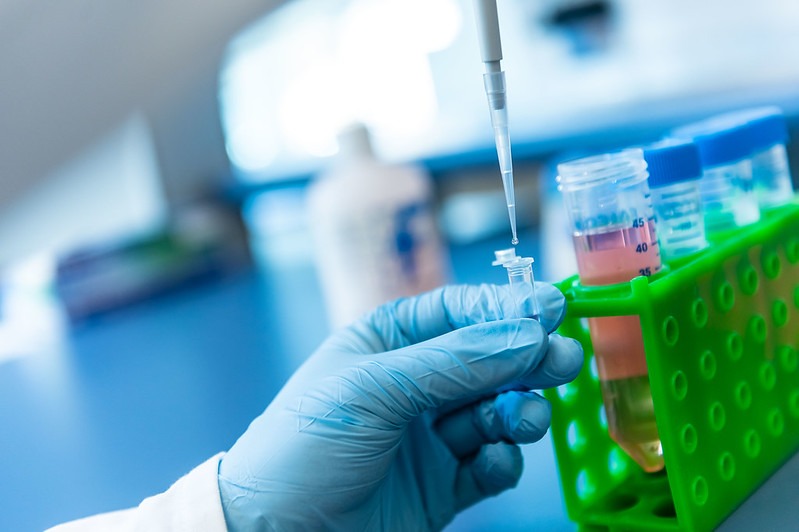Molday Lab
Research Focus Teams: Rare Diseases
Ongoing Projects
chevron_left
chevron_right
Rod and Cone Photoreceptor Cells
The outer segment is a specialized compartment of rod and cone photoreceptor cells where light is captured and converted into an electrical signal in a signaling process known as phototransduction. The rod outer segment consists of a stack of over 1000 discs surrounded by a plasma membrane. We are identifying and characterizing novel membrane and cytoskeletal proteins important in phototransduction, generation and renewal of outer segments, protein trafficking from the inner to the outer segment, and photoreceptor cell survival.
ABCA4 and Stargardt Macular Degeneration
ABCA4 is a member of the family of ATP-binding cassette (ABC) transporters that resides in outer segment disc membranes. Over 800 mutations in ABCA4 are responsible for a relatively common early onset retinal degenerative disease known as Stargardt macular degeneration. We have recently shown that ABCA4 functions as retinoid-lipid transporter which plays a key role in the removal of potentially toxic retinoids from photoreceptors. We are currently studying the structure, function and mechanism of transport of ABCA4 and disease-associated mutants in order to determine how selected mutations in ABCA4 cause Stargardt disease. We are also exploring the use of drug and gene therapy as potential treatments for Stargardt disease.
RD3, GC, and Leber Congenital Amaurosis
RD3 is a 23 kDa protein encoded by a gene associated with Leber Congenital Amaurosis Type 12 (LCA12), a inherited retinal dystrophy which causes severe vision loss in infants. Mutations in RD3 also cause rod and cone photoreceptor degeneration in the rd3 mouse and rcd2 collie which serve as valuable animal models for LCA12. We have recently shown that RD3 plays a crucial role in the trafficking of guanylate cyclase (GC) to rod and cone outer segments. GC is a key protein involved in the production of cGMP, the second messenger for phototransduction, and associated with Leber Congenital Amaurosis Type 1 (LCA1). Ongoing studies are directed toward elucidating the mechanism by which RD3 facilitates vesicle trafficking of GC to outer segments. We are also carrying out studies to determine if the delivery of the Rd3 gene to photoreceptors using AAV vectors can restore vision and maintain photoreceptor cell survival in the rd3 mouse as a proof-of-concept for the application of gene therapy as a possible treatment for LCA12.
Phospholipid Transport across Membranes
P4-ATPases and ABCA Transporters function in the transport of phospholipids to generate lipid asymmetry across biological membranes and facilitate lipid homeostasis. We have recently purified and characterized a P4-ATPase known as ATP8A2 and have shown that it is localized in rod and cone photoreceptors where it transports or flips phosphatidylserine and phosphatidylethanolamine across cell membranes, a process that is important in vesicle trafficking and phototransduction. We have also shown that both ABCA4 and ABCA1 function as phospholipid transporters, but transport phospholipids in opposite directions. Current research is focused on analysis of the structure and function of various P4-ATPases and ABCA transporters in order to define in detail their mechanism of action and role in biological processes and disease.
Adenine base-editing paired with lipid nanoparticles as a treatment for inherited retinal diseases associated with severe loss in vision
Research is directed toward developing and evaluating base editor technology paired with lipid nanoparticle (LNP) delivery to repair single nucleotide mutations in genes linked to retinal diseases thereby restoring protein expression and function and preventing further photoreceptor degeneration and a loss in vision.
Characterization of the lipid flippase ATP8A2, and its role in neurodegenerative diseases
Lipid flippases are essential membrane proteins widely expressed in cells. These lipid transporters responsible for generating and maintaining membrane lipid asymmetry, a cellular feature essential for a wide range of cellular pathways such as cell signaling, protein trafficking, blood coagulation, and apoptosis. My project seeks to further our understanding of how loss of function mutations in the lipid flippase, ATP8A2 causes severe neurodegenerative disease, and the different mechanisms this protein utilizes to regulate its activity.
Molecular interactions maintaining photoreceptor outer segment structure
This project aims to identify the molecular interactions that maintain the precise stacking and spacing of photoreceptor discs, a crucial process for visual function. Using a combination of co-immunoprecipitation (Co-IP) and BioID, we are characterizing key protein-protein interactions that contribute to this structure. Additionally, we are exploring gene editing techniques to study PRPH2 disease mutants, providing insight into how structural disruptions lead to inherited retinal degenerations.
Structure-function relationship of retinal guanylyl cyclase, a key enzyme in phototransduction
The daily cycle of visual sensitivity adjustment is managed by switching between rod and cone pathways of retina. These pathways involve retinal guanylyl cyclase (retGC), an enzyme encoded by the GUCY2D gene expressed in rod and cone photoreceptors. In the light-induced signal cascade, retGC restores cGMP levels in the dark in a calcium-dependent manner. Mutations in GUCY2D are associated with recessive Leber congenital amaurosis-1 (LCA1) as well as dominant and recessive forms of cone-rod dystrophy (CORD). Presently, the molecular structure of retinal GC has not been determined; thus, its mechanism, interaction with other regulators, and identity of crucial residues conferring the activity of this enzyme have been elusive. We aim to fill this gap in our knowledge by determining the molecular structure of retGC. This information will enhance our understanding of the role of retGC in photoreceptors and diseases.
Life Sciences Institute
Vancouver Campus
2350 Health Sciences Mall
Vancouver, BC Canada V6T 1Z3





